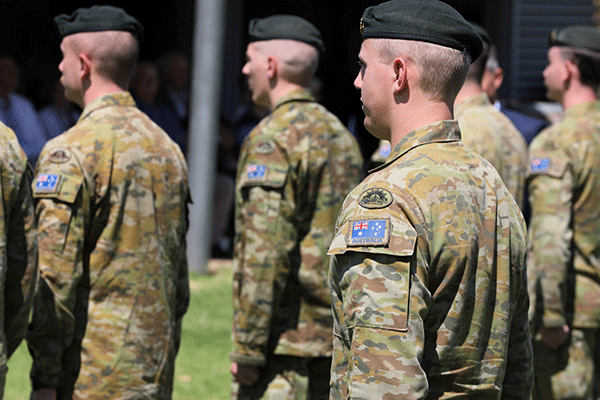Defence
Leading the world from Williamtown

In his 23rd year with BAE Systems Australia, Andrew Chapman is at the forefront of Defence aviation operations in Australia as the company’s Director for Aircraft Sustainment and Training. Despite the impacts of COVID-19, the organisation had a largely successful 2021, achieving many milestones including new contracts for F-35 sustainment and the Hawk Lead-In Fighter while inducting the first F-35 into the South Pacific depot at Williamtown, a precinct that is fast becoming an international aero hub and the centre of fast jet sustainment in Australia.
We sat down with Andrew to find out what is next for 2022 and beyond.
1. Tell us a bit about your background leading into your role as Director of Aircraft Sustainment and Training?
After completing a Bachelor of Electrical and Computer Engineering in 1997 at the Queensland University of Technology, I joined the Royal Australian Air Force as an Avionics Technician. After just over four years, I did a stint with Boeing as a Systems Engineer before transferring to BAE Systems Australia. Twenty-three years later I am pleased to say I am still with the nation’s biggest Defence prime.
Early on at BAE, I worked in various roles within the business on both LIF and F-35 programs, working my way up to the Head of Engineering and General Manager before taking on the role of Director in 2019.
2. What are the challenges and highlights you have experienced as Director?
Ensuring our business meets the customer’s demands during a global pandemic has certainly been a challenge! The daily tasks of working to maintain a sustainable operation in the midst of lockdowns certainly presented difficulties. But many of our team members at Williamtown and RAAF Base Pearce worked through the pandemic and guaranteed delivery to the customer no matter what. That is a massive point of pride for me.
Beyond the pandemic, our team had such an incredible year in 2021. Achievements including the plan withdraw date extension for Lead in Fighter to 2031 and the first F-35 inducted into the South Pacific depot. These successes come from a fundamental belief in what we are doing here in Williamtown. There is a huge sense of pride felt by everyone and the understanding of the massive contribution we make to the defence of this country.
3. Can you tell us about the establishment of F-35 sustainment capability in Australia?
BAE Systems Australia has been assigned as the Regional Product Support Provider (PSP) directly supporting the F-35 Joint Program Office’s (JPO) Global Support Solution (GSS) approach to sustaining a global fleet of 3000+ F-35 aircraft.
Specifically, we have been assigned to support the following regional F-35 sustainment capabilities:
- Regional Heavy Airframe Depot Maintenance Repair Overhaul and Upgrade (MRO&U) for Southern Pacific region;
- Regional F-35 Warehouse for Asia-Pacific region and;
- Regional F-35 Component MRO&U Depot Assignments for Asia-Pacific region.






